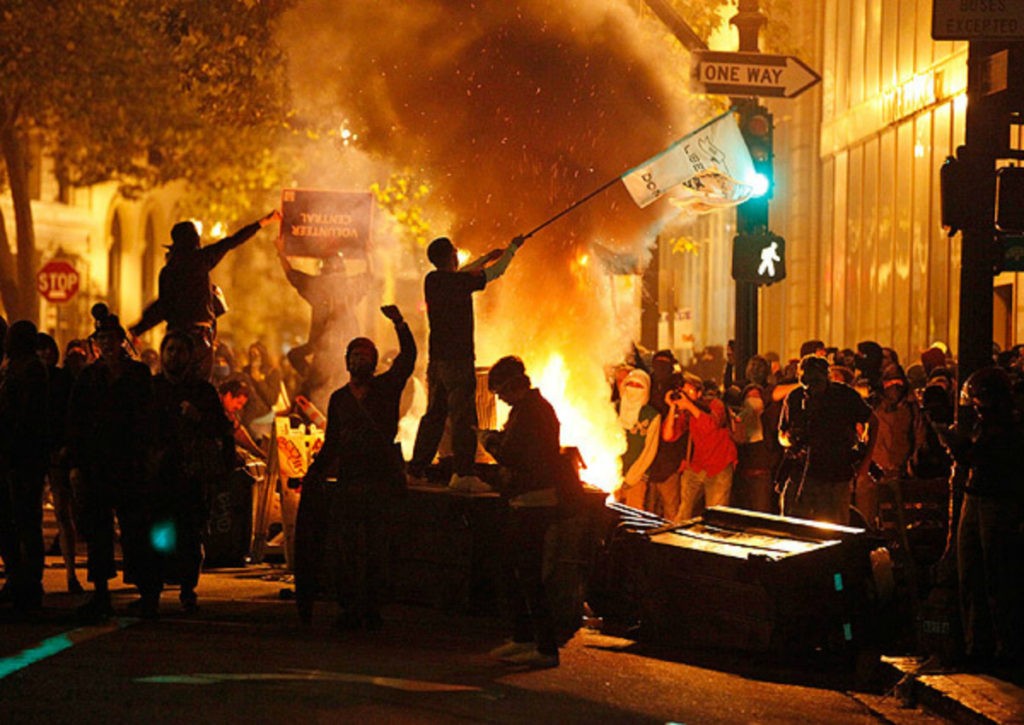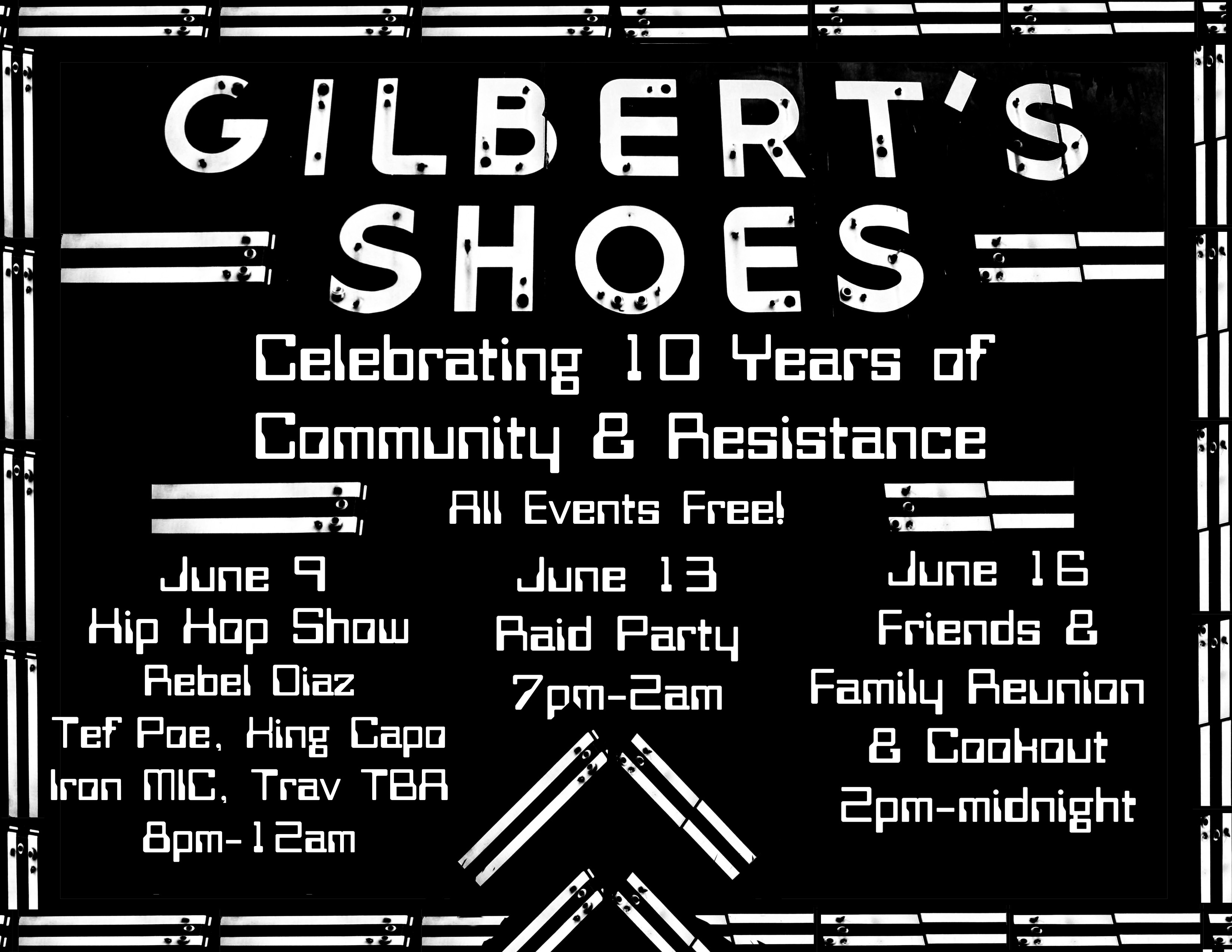from It’s Going Down

This piece is a companion to another from the Radical Education Department, “The Insurrectionary Campus: A Strategy Proposal”, which originally ran on It’s Going Down. That article was a specific application of the wider theoretical and strategic framework developed here.
Download and Print Here
Intro
How can anarchists help mobilize mass revolutionary struggle in America?
Socio-political fascism is on the rise again, giving this question fresh urgency. But that rise is the result of the basic structures of neoliberal capital. Fascism is the ruling social class’ attempt to tame a basic contradiction. Capitalism’s ruthless domination of human life and nature drives economic and ecological catastrophes and growing rebellion. To suppress widespread unrest, the establishment mobilizes the white supremacy, patriarchy, xenophobia, and militarism that have always been essential to capital, combining them in a more nakedly and aggressively authoritarian state. Trump is merely the puppet of this dynamic. America is hardly unique. The dynamic plays itself out in different ways and in various degrees in India, Russia, Turkey, Europe, and beyond.
Anarchists are facing a historic opportunity. We are witnessing an unprecedented outpouring of resistance in America, building on long-standing radical struggles. And in recent decades, anarchist ideas and practices have played an essential role in organizing radical resistance—from consensus-based decision-making to affinity groups, horizontal assemblies, and emphasis on decentralized direct action. This influence was obvious in the Global Justice Movement, in Occupy, and in Antifa coalitions today. Moreover, Trump’s brand of state fascism has sparked a crisis within the ruling class itself; it hasn’t fully established itself inside the state.
All of this means anarchists are poised to play a powerful role in helping organize a radical challenge to fascism’s rise and the oppressive society that requires fascism to function. But radical struggle is deeply fractured and reactive. How are anarchists to respond? In recent years, anti-authoritarians have debated a number of organizing possibilities to channel radical energy into mass projects: using insurrectionary methods to assert our freedom and provoke the masses into action; building coalitions of multiple leftist groups, like in Antifa; emphasizing “cadre politics”, entering existing mass movements to push them leftwards; creating and expanding specifically anarchist movements (“especifismo”); organizing workplace, neighborhood, or city councils (as in anarchosyndicalism or, in a different way, in Occupy); and beyond.
“For huge swaths of the radical left, the idea of building a new hierarchical party or group is justly discredited. This is an important part of the growing appeal of anarchism for the radical left today.”
To this debate—and drawing in various ways on all these traditions and beyond—I propose an “insurrectionary councilism.” This proposal is rooted in an analysis of the material conditions anarchists face today. Capital is undergoing an uneven, combined regression into more savage and direct forms of domination. At the same time, the radical left is beginning to congeal into a more radical form but remains deeply divided. In this context, insurrectionary councilism does not focus on either entering existing mass struggles (like in cadre politics) or building a specifically anarchist movement (as in especifismo). Following the lead of Antifa in Michigan and Charlottesville as well as the tradition of anarchosyndicalism, it calls for something else: creating radical, hybrid councils of delegates from the most radical anarchist and non-anarchist groups in a city for the sake of an experimental, federated, direct-action oriented system.
These are the aims of an insurrectionary councilism: to help tap into and share the rich and deep experience of groups too long separated from each other; to use those connections to build revolutionary solidarity and networks of coordinated radical action; and therefore to help congeal the revolutionary power of the radical left—to capitalize on this moment of crisis and danger. The aim is a more vibrant, intersectional, and coordinated federation of revolutionary groups.
This proposal emerges out of my work with the Radical Education Department. RED is a “pan-radical left,” rather than a strictly anarchist, organization. But it contains a strong anarchist current, and it is attempting to put many of these ideas into practice in Philadelphia. Ultimately, this proposal is self-consciously provisional. Arising out of RED’s experiments, it means above all to provoke non-dogmatic strategies, tactics, and ideas to help combine radicals and add to the creation of a powerful, broad, and revolutionary mass movement. It will, of course, need to be challenged, revised, and rethought as these experiments continue.

 The December letter-writing event will be a New Year’s card-writing party for all US-held political prisoners. Rather than focusing on a specific set of prisoners, we will send a card to each of the nearly 60 US-held political prisoners sending them season’s greetings. This is a time we set aside annually to send short messages of solidarity to everyone recognized as being held in prison for their political beliefs or actions. This enables us to drop a line each year to prisoners that we have either already featured more in depth at letter-writing events throughout the year or those we will be doing events for in the future. We will also send birthday greetings to those with birthdays in December:
The December letter-writing event will be a New Year’s card-writing party for all US-held political prisoners. Rather than focusing on a specific set of prisoners, we will send a card to each of the nearly 60 US-held political prisoners sending them season’s greetings. This is a time we set aside annually to send short messages of solidarity to everyone recognized as being held in prison for their political beliefs or actions. This enables us to drop a line each year to prisoners that we have either already featured more in depth at letter-writing events throughout the year or those we will be doing events for in the future. We will also send birthday greetings to those with birthdays in December:  In the best spirit of anarchism, this seminar will strive to create a space of learning together, drawing from our shared understandings and experiences. It will explore anarchism as an ethical compass, which points simultaneously to an overarching critique of all forms of hierarchy and an expansive social vision of what it could mean to be free people in a free society. It will look at how anarchism can offer a way of thinking —a critical or dialectical theory—to find “cracks in the wall.” And from there, crucially, it will dig into anarchism as a living, breathing, prefigurative politics, utilizing illustrations from messy-beautiful experiments in the here and now that at once gesture toward a liberatory, loving world. At its heart, this seminar will revolve around what it means to aspire toward and practice an “everyday anarchism,” where notions such as self-organization and self-governance, mutual aid and solidarity, autonomy and collectivity, dignity and care, to name a few, become commonsensical second nature as well as the basis for new social relations and social organization.
In the best spirit of anarchism, this seminar will strive to create a space of learning together, drawing from our shared understandings and experiences. It will explore anarchism as an ethical compass, which points simultaneously to an overarching critique of all forms of hierarchy and an expansive social vision of what it could mean to be free people in a free society. It will look at how anarchism can offer a way of thinking —a critical or dialectical theory—to find “cracks in the wall.” And from there, crucially, it will dig into anarchism as a living, breathing, prefigurative politics, utilizing illustrations from messy-beautiful experiments in the here and now that at once gesture toward a liberatory, loving world. At its heart, this seminar will revolve around what it means to aspire toward and practice an “everyday anarchism,” where notions such as self-organization and self-governance, mutual aid and solidarity, autonomy and collectivity, dignity and care, to name a few, become commonsensical second nature as well as the basis for new social relations and social organization.












